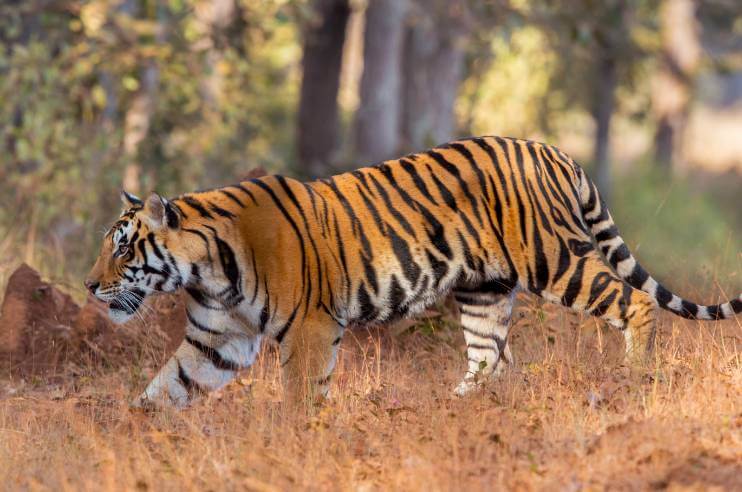
11 Jun, 2024
5 Best National Parks for Tiger Safaris in Madhya Pradesh
In the very center of India, Madhya Pradesh, lies the treasure of offbeat wildlife destinations that can turn anyone and everyone into a fan of Madhya Pradesh tourism. The state is eminent for having the highest number of tigers living in its seven tiger reserves. But beyond that, these wildlife hotspots are filled with wild creatures you have only seen in the videos.
In this blog, we will read about the top 5 national Parks of Madhya Pradesh. These parks not only promise a good chance of sighting the apex predator of these jungles, the Bengal Tiger, but will thrill you with amazing experiences, beautiful landscapes, enchanting euphonies of jungle, and intriguing stories of its wild inhabitants.
So, let’s delve right away to know those 5 wildlife destinations in Madhya Pradesh and what’s so special about each of them.
Kanha National Park & Tiger Reserve
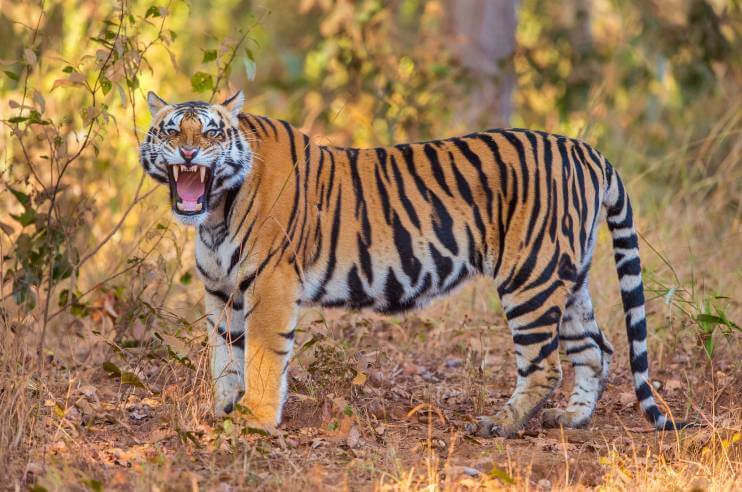
Kanha National Park is a natural oasis, a wildlife hotspot in the Maikal range of Madhya Pradesh. It is one among the most illustrious national parks in India. This biodiversity sanctum was recognised as early as 1860 and was declared a wildlife sanctuary in 1933, to conserve the dwindling forest in the region.
Kanha National Park has a moist deciduous forest comprising towering sal trees predominantly. Lush greens, dense forest, and open meadows, all combine to be the reserve area of Kanha present near the border of Madhya Pradesh and Chhattisgarh. When Captain James Forsyth discovered Kanha’s beauty and wrote his thoughts in his book called “Highlands of India,” a personal memoir of his excursions.
It was also one of the first tiger reserves to be introduced in the Project Tiger initiative of India in the year 1973. Although a tiger reserve, Kanha National Park was mainly focused on the wildlife conservation of the endangered deer species, the hard ground Barasingha. The Barasingha deer species was once on the verge of extinction when Kanha National Park encouraged breeding programs in enclosed areas to achieve the population count of over thousand of this species from merely 60 of them.
Entering the forest of Kanha National park is a transition to a lush realm surrounded by tall sal trees and greenery. Almost 60% of the forest is blanketed by Sal trees. This diverse ecosystem is home to over 800 plant species, 320 birds, 50 aquatic animals, 26 reptiles, and a staggering 43 mammal species. Although, only about 20% of the total core area of the forest is open for tourists, this is enough to witness aplenty of wildlife.
Park is majorly divided into two regions, the core zone and the buffer zone. Core zone is further divided into six areas namely Kisli, Mukki, Sarhi, and Kanha in the west while Bhaisanghat and Supkhar zone in the east. Any part of these zones offers a chance to spot magnificent animals roaming around freely in their natural habitat.
Kanha not only is dotted with magical landscapes but also a diverse range of fauna which includes many endangered and uncommon animals. There are more than 800 plants, 320 birds, 50 aquatic animals, 26 reptiles, and 43 mammal species.
Apart from Bengal Tiger and Barasingha, Kanha has a healthy population of sloth bears and predators like leopards and wild dogs. The water bodies which are dotted all around the park are the hotspots of wildlife encounters. Animals like Chital, Sambar, Black buck, Barking deer, Chousingha, Gaur, Langur, Wild pig, Jackal, regularly approach the water ponds to quench their thirst. Your wildlife rendezvous cannot be more enthralling than traversing through the deep forest of Kanha National Park through jungle safari.
Bandhavgarh National Park & Tiger Reserve
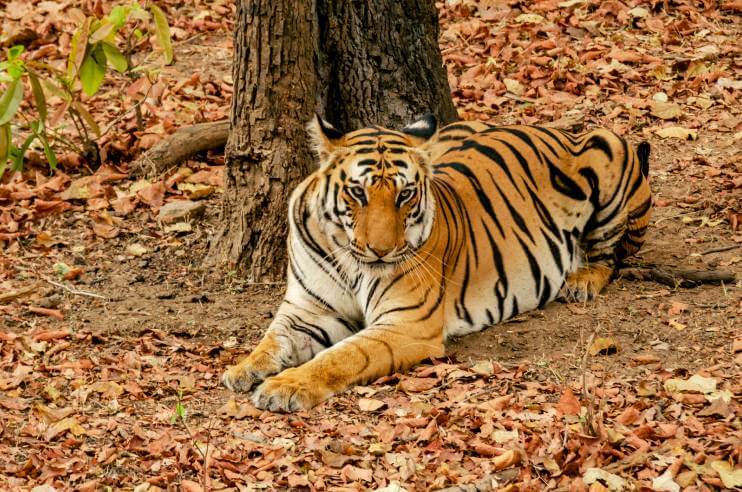
Bandhavgarh National Park is a densely forested wildlife reserve which is reputed for its high Tiger population density. The core area of Bandhavgarh tiger reserve is around 100 sq. km while the encircling buffer area is about 400 sq. km. Although the park spans a lesser area, this comes a s an advantage for tourists for sighting tigers.
Bandhavgarh is a lush territory occupied with sal forests, grass meadows, mixed forest, bamboo, and rocky hills. In the center of the park is the Bandhavgarh Fort, which was built over a mesa called Bandhavgarh hill with around 800 meters of altitude. There are several small hills alla around the park creating small valleys. The lower valleys are mostly Sal forest while the hills are mixed deciduous.
Bandhavgarh plays a significant role in the wildlife tour in Madhya Pradesh, not only due to its wild-life but also its historical legends. According to local beliefs, the Bandhavgarh fort was a gift to Lakshman, by his brother, Lord Ram. Thus, the name, Bandhavgarh, which means "brother's fort".
Most people come to Bandhavgarh National Park, to boost their probability of getting glimpses of the rare and glorious predator, Bengal Tigers, but inadvertently they get to witness the diverse and magnificent animal kingdom here. Bandhavgarh is home to a diverse range of animals including mammals like spotted deer, wild pigs, chausingha, Barking deer, Nilgai, Indian civet, palm squirrel, etc. Bandhavgarh also has a good population of leopards.
The biosphere of Bandhavgarh also hosts more than 250 bird species including Indian Pitta, Paradise Flycatcher, Crested Serpent Eagle, Long-billed, Egyptian & Himalayan Griffon Vultures, Malabar Pied Hornbills, Kingfishers and Indian Rollers.
Also, many reptile species like cobra, viper, python, turtles, and a number of lizards are seen around the water bodies of the park.
The enchanting and dense thickets of Bandhavgarh National Park are not less than a paradise creating a harmony between human and nature. The wildlife journey in Bandhavgarh satisfies both tourists and wildlife lovers alike.
Pench National Park & Tiger Reserve
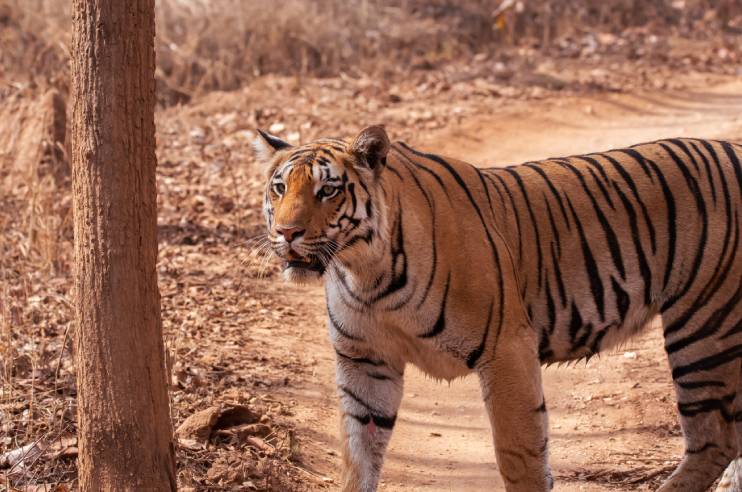
Exploring wildlife of Madhya Pradesh is incomplete if you have not visited one of the most prestigious wildlife oases, Pench National Park. The forest of Pench is believed to be younger than its fellow parks and is beautifully sprinkled with more exciting locations to explore.
Pench National park and its wildlife is mentioned in Mughal documents and many other wildlife literatures, but Rudyard Kipling, an English novelist, captured the world's imagination with his classic work, The Jungle Book. The beauty of Pench forest inspired him to plot his stories and characters from this jungle.
Pench National Park is named after the Pench river that flows right from its middle. Pench National Park lies on the southern border of Madhya Pradesh and a significant part of its forest area lies in the neighboring state, Maharashtra. Pench National Park also has two divisions, one is the Indira Priyadarshini National Park and the other is Mowgli-pench sanctuary. This forest was first declared a sanctuary in 1977 and later recognised as a Tiger reserve in 1992.
Pench National Park is spread over an area of around 750 sq km with a core region of 300 sq km and buffer area of 400 sq km. The jungle safari into the dense forest of pench opens up to open meadows at regular intervals. These are the best places to spot groups of various animals like deers and antelopes.
The diverse flora of Pench National park, which includes tall thickets, shrubs, and climbers, support a lot of animal and bird life. Other than the Shar Khan (Bengal Tigers), Pench is home to Indian leopards, gaur, chital, sambar deer, jungle cats, sloth bear, four-horned antelope, and many other exotic species. There are around 300 species of birds including resident and migratory avians like White-eyed Buzzard, Malabar Pied Hornbill, Indian Pitta, Osprey, Grey-headed Fishing Eagle, Sarus Crane, peafowl, red vented bulbul, crow pheasant, crimson-breasted barbet, red jungle fowl, etc.
The immersive journey in the expansive realm of the wild of Pench National Park only fills you up with amazing wildlife encounters and aplenty of memories.
Panna National Park & Tiger Reserve
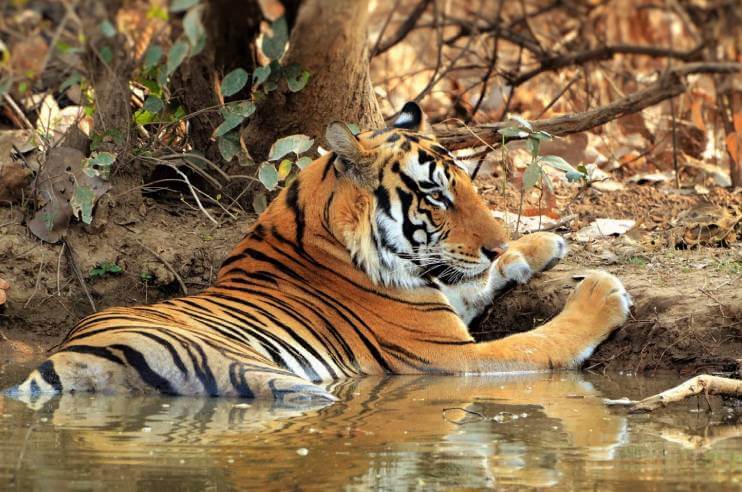
Panna National Park (PTR) opens a gate to the pure realm of wildlife. Regular warning calls of animals, swift movements of creatures, rustle that forces you to turn in each direction, and glimpses of creatures being wild, is the picture that paints whilst your tiger safari in the wildlife of Panna.
With a core area of 576 sq km and a buffer area of over 1,000 sq km, panna offers a unique expedition in an environment that feels otherworldly. PTR has no divisions in the core area which allows tourists to explore any of the safari trail routes and get the best sighting of wild animals.
Penna is the part of gangetic plains and comprises dry deciduous forest of mahua, arjun, tendu, and kardhai trees. The thickets are mixed with extensive grasslands to provide the best glances into the wildlife movements.
Panna National Park was established in 1981 and later turned into India's 22nd tiger reserve in 1994. In 2008, this reserve lost almost all of the Bengal tigers to poaching, but reintroduction and breeding programs from 2009 helped the park to recover the lost population.
Ken river, the major water source of Penna National Park, flows through the park. The ravines and the forest belt of panna is a host to many natural and archaeological wonders. The ravines of penna are home to a diverse range of wild-life. Apart from the Bengal Tigers, the most impressive animal in the whole Madhya Pradesh wildlife safari, penna is also a home to Indian leopards and other Jungle cats, scavengers like the striped hyena, and Indian jackal. Many herbivore species like chinkara, nilgai, chital, sambar, and chausingha, reside in the lush territory. Furthermore, over 200 species of bird life call penna their permanent or temporary home during migration.
There are two beautiful waterfalls in Penna, Pandav falls, which is named after the pandav brothers of Indian epic mahabharat, and the Ken river gorge, also known as Karnvati.
The gorge of Dudhwa Seha provides a wonderful panoramic view of the Penna National Park and the vulture nests on the canyon. The cliff made up of granite, dolomite, and quartz caters to some of the best landscape of the park.
More than exploring the wildlife, Panna National Park also provides a chance to witness the water birds and crocodiles on the boat rides in Ken river. Undoubtedly, there are more chances of spotting animals, quenching their thirst, on the bank of the river.
Satpura National Park & Tiger Reserve
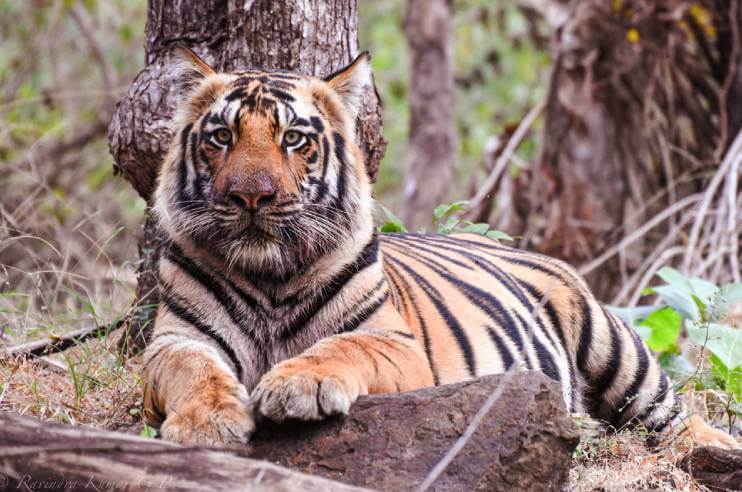
The name itself defines the landscape – Satpura, meaning ‘seven mountains. Satpura National Park (STR), a biosphere territory of Madhya Pradesh, is enveloped in lush hills, offering a serene experience amidst the wild. This translates to wildlife safaris unlike any other – no crowds, no struggling for tickets, no long queues, and uncrowded vehicles during wildlife encounters.
This journey to the peaceful jungle of Satpura is a complete package of exploring Madhya Pradesh wildlife. Explore beautiful hilly terrains, deep gorges, and rivulets. Encounter large herds of mammals and enjoy excellent birding opportunities in untouched forest locations. Satpura National Park was even awarded the prestigious TOFT wildlife tourism award in 2010 for being the most friendly wildlife destination.
The magic behind it all? The 4000 feet high Satpura range. It forms a watershed between the Narmada and Tapti rivers, creating stunning sandstone peaks, gurgling streams, cascading waterfalls, and dense Sal and Teak forests. This unique pollution-free ecosystem allows for activities like cycling, canoeing, and trekking right from the entry gate at Madhai, which is a one-of-a kind experience only possible here. The large water body also allows the tourist to enjoy boat safaris.
Satpura National Park was formed in 1981 combining Satpura, Pachmarhi, and Bori sanctuary, which packaged it with a rich ecosystem. The incredible array of fauna includes a significant count of Bengal Tigers and many other magnificent species like Indian bison, leopards, sloth bears, black bucks, porcupine, Nilgai, sambar, golden jackals, chital, and sloth bears, etc. As a wildlife conservation effort, the re-introduction of a significant population of Hard Ground Barasingha in the park also added to the wildlife diversity of Satpura. Also, the park's various water bodies and large reservoirs not only host a variety of resident and migratory birds but also reptiles like gharials, mugger crocodiles, and Indian softshell turtle. Some major birds include the Malabar Pied Hornbill, Black Crested Bulbul, Crested Hawk Eagle, Crested Serpent Eagle, and Indian Skimmer.
But Satpura National Park has more than its wildlife. History buffs are baffled to know that this park has more than 50 rock shelters from historical times, making it an archaeological heritage. This unique combination of nature, wildlife, and historical significance makes Satpura National Park a must-visit wildlife getaway for people seeking exploration of untouched nature.
Other Interesting Blogs to Read
- Hot Air Balloon Safari in Pench
- For Every Traveller: Top Things to Keep in Mind for Responsible Wildlife Tourism
- Visit a Lesser Known Destination in Madhya Pradesh- Pristine Tamia
- Pench Online/Offline Safari Booking Tips
- India's First Ever Dark Sky Park!
- Best Things to Do in Pench National Park
- Rare Black Panther Spotted in Pench Tiger Reserve
- Top 10 Weekend Getaways around Pench Tiger Reserve
- Best Top-Rated Places to Stay in Pench National Park

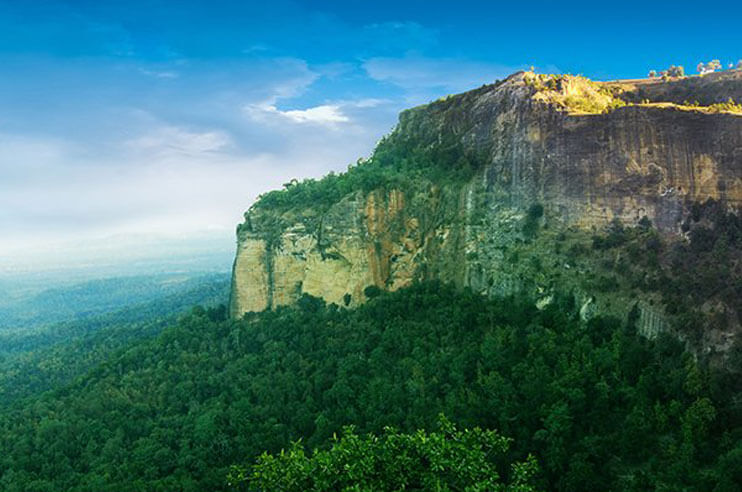

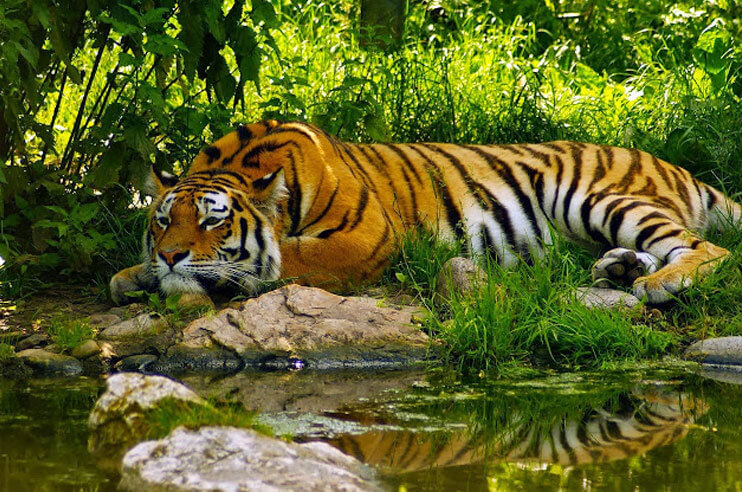
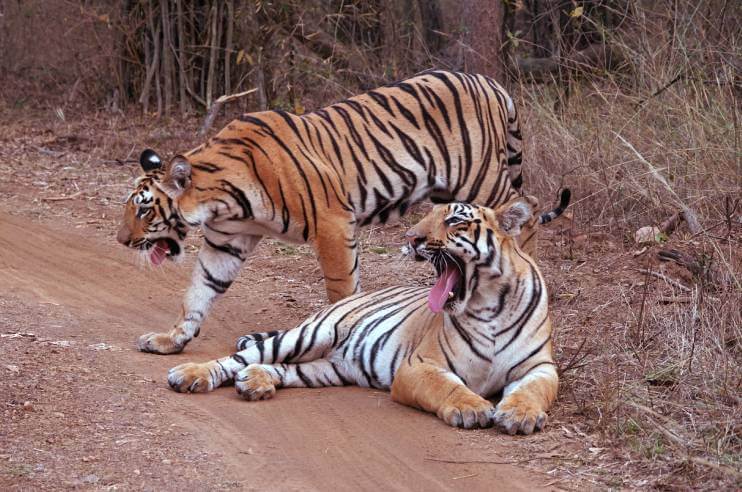
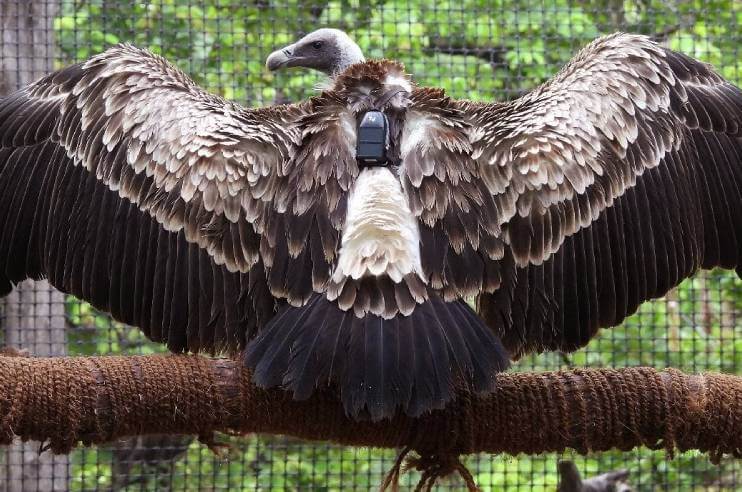







 Share
Share Home
Home Packages
Packages Book Now
Book Now